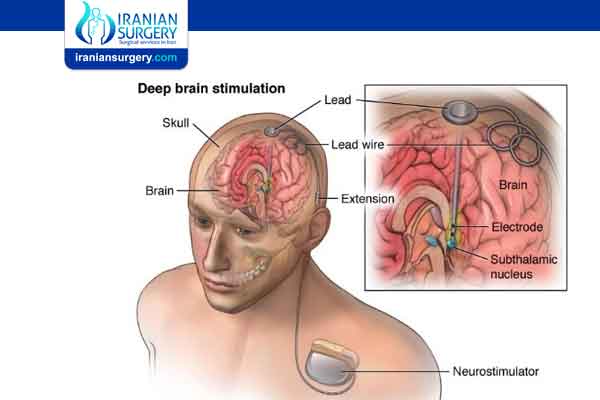Complication of Deep Brain Stimulation for Parkinson’s disease

Risks and Complications of deep brain stimulation (DBS)
Although deep brain stimulation is minimally invasive and considered safe, any type of surgery has the risk of complications. Also, the brain stimulation itself can cause side effects.
Complications of DBS fall into three categories: surgery complications, hardware (device and wires) complications, and stimulation-related complications.
Read more about : Parkinsons disease treatment
. Surgery risks
Deep brain stimulation involves creating small holes in the skull to implant the electrodes, and surgery to implant the device that contains the batteries under the skin in the chest. Complications of surgery may include:
. Misplacement of lead
. Bleeding in the brain
. Stroke
. Infection
. Breathing problems
. Nausea
. Heart problems
. Seizure

. Possible side effects after surgery
Side effects associated with deep brain stimulation may include:
. Seizure
. Infection
. Headache
. Confusion
. Difficulty concentrating
. Stroke
. Temporary pain and swelling at the implantation site
A few weeks after the surgery, the device will be turned on and the process of finding the best settings for you begins. Some settings may cause side effects, but these often improve with further adjustments of your device.
Because there have been infrequent reports that the DBS therapy affects the movements needed for swimming, the Food and Drug Administration recommends consulting with your doctor and taking water safety precautions before swimming.
Read more about : Parkinsons disease stages
. Possible side effects of stimulation
. Numbness or tingling sensations
. Muscle tightness of the face or arm
. Speech problems
. Balance problems
. Lightheadedness
. Vision problems, such as double vision
. Unwanted mood changes, such as anger and depression
. Hardware complications
Hardware complications include movement of the leads, lead failure, failure of any part of the DBS system, pain over the pulse generator device, battery failure, infection around the device and the device breaking through the skin as the thickness of skin and fat layer change as one ages.
Read more about : Deep Brain Stimulation for Parkinson’s disease

